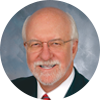More than 100 years after the first adjustment, chiropractic still lacks the cultural authority of traditional American medicine.
The reality is that any chiropractor in practice who desires to expand chiropractic cultural authority need not wait for testimony from patients or researchers to increase their cultural authority in their community. "Grassroots authority" is available to the chiropractor who desires it. This local influence can have just as much impact as political lobbying and research, especially when all of three of these pursuits work together for the good of the order. All it takes is for the chiropractor to understand where authority comes from and how to communicate with those who hold it in their community.
What is cultural authority? It is the ability to impact public perception and influence the public based on the perceived authority behind the person, institution or profession. To the practicing physician, cultural authority means their opinion matters.
Where does authority come from? Chiropractic is squarely settled under the umbrella of "health care." That means the gatekeepers to authority are those that define cultural authority in the Western medical model. They are a loose network of medical researchers, doctors and teaching institutions who decide what is suitable for health care based on their research, clinical experience, and how they shape professional medical curriculum.
Of course, economics and managed care play a large role, too. These gatekeepers are not a homogenous bunch; they often disagree about their data. They do, however, come to a kind of working consensus meant to improve patient care.
As all chiropractors are complementary and alternative medicine (CAM) practitioners, we must labor under the handicap of having our methods considered outside the mainstream. While we have some remarkable experts who have advanced our science and understanding of what we do, until we can better describe the physiological mechanisms of the chiropractic adjustment, we have very little of our own authority to enter into health care consensus-building.
How can you inspire greater chiropractic authority in your community? "Bridge by bridge" is how you move and get things done during wars. It is also a good phrase for the individual chiropractor's role in winning more cultural authority. Working bridge by bridge is what local doctors can do in their community to increase their cultural authority.
"Bridge by bridge" means doing the right thing in the right place and time, and in a way that's understandable to the gatekeepers of health care authority in your community. Working successfully in an integrated health setting is among the most powerful of such bridges, and one of the best ways to grow local chiropractic authority.
Click here for previous articles by Arlan Fuhr, DC.





